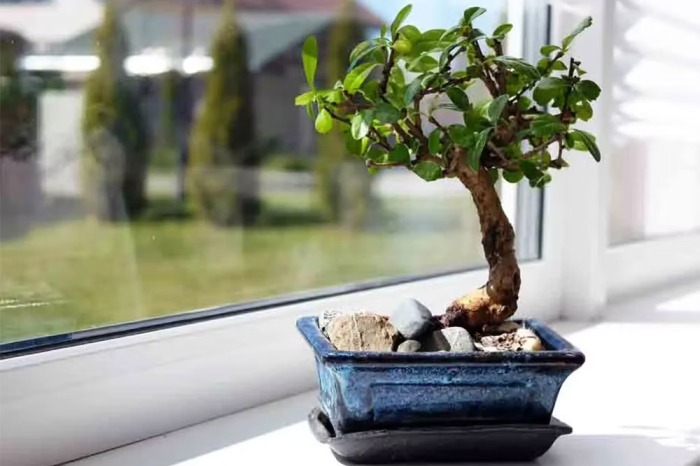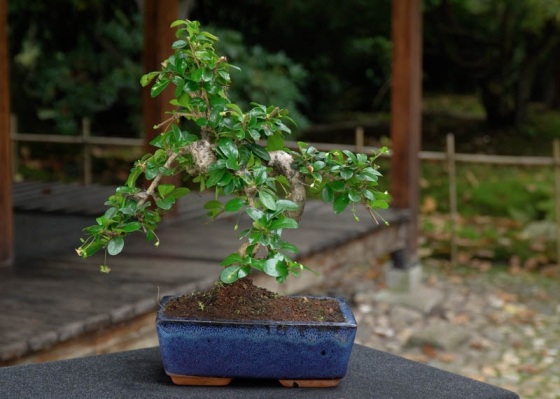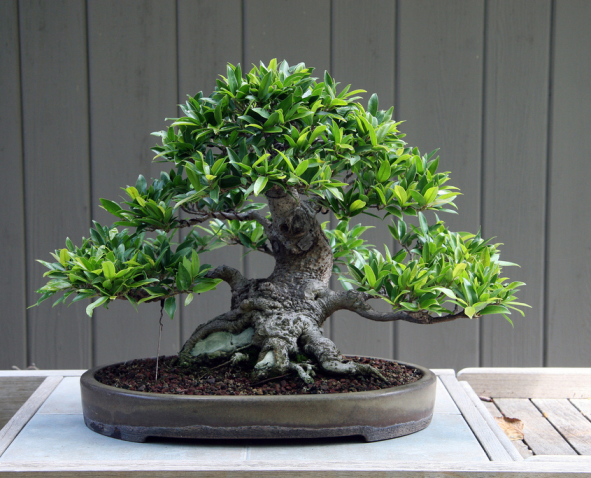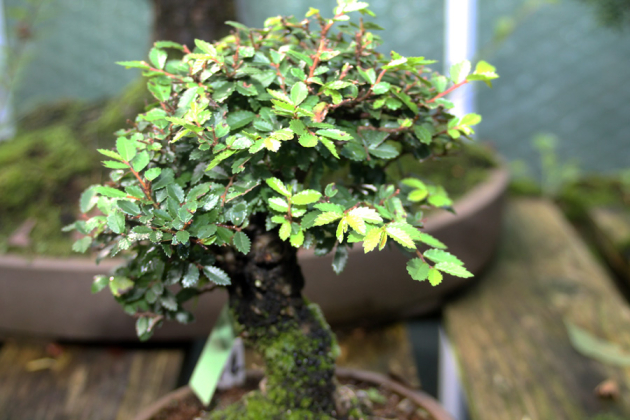
In today’s world full of hustle and bustle creating a productive and positive study space is essential for your productivity and overall well being. One often ignored but highly effective method to achieve this is by placing bonsai trees as study table dacoration plants. Bonsai plants, with their distinctive appeal and countless benefits, are the ideal alternative to enhance your study table decoration.
Carefully positioning a stunning bonsai tree in your study area will set the mood for study. As part of your home décor, placing a small bonsai tree on your study table is a wonderful way to incorporate art in your creative area. To keep indoor bonsai trees healthy and on display long-term, you need to select the tree species precisely.
Here’s a list of species that can survive as an indoor tree. These are a few of the best indoor bonsai plants because they’re adjusted to regular moderate temperature, low humidity, and low-light states, but before revealing those I should tell you why you should go for bonsai instead of other other artificial study table decors.
Why choose a bonsai tree for your study table?
1. Bonsai Trees Enhance Study Table Aesthetics:
Bonsai trees are small creations of art, known for their unique looks. Their sleek and timeless appearance can immediately boost the aesthetics of any study space. You will be able to save time for walks in nature to freshen up your mood in between studies by bringing nature inside your room so that your mood will be fresh all the time.
2. Improved Air Quality and Wellbeing
One of the most tempting reasons to include bonsai trees in your study environment is their positive effect on air quality. Like other indoor plants, bonsais help purify impurities, disengage oxygen, and boost humidity levels. This leads to adequate air quality, decreasing the risk of disease and promoting the overall well-being of the students. A healthier study area can be rephrased into increased productivity.
3. Tension Reduction and Mental Health Benefits:
The presence of a leafy and well-maintained bonsai can have a soothing effect on students, decreasing stress levels and boosting mental clearness. The act of managing a bonsai, such as pruning and watering, can also deliver a sense of mindfulness and peace during exam time. This can greatly contribute to enhanced mental health and emotional well-being, ensuring a good performance in your exams.
4. Increased Productivity and Ideation:
Studies have shown that the presence of bonsai can boost productivity and ideation among students. The soothing effect of greenery can help lessen distractions and improve focus, making it more comfortable for students to stay on task and complete their homework. This makes bonsai trees an excellent addition to study spaces.
5. Low Maintenance and Space-Saving
Bonsai trees are ideal study table plants due to their miniature size and low maintenance needs. They don’t take up much area and can thrive in shallow pots, making them appropriate for even the tiniest tables. With proper care, bonsais trees can live for many years, delivering an eternal source of beauty and well-being in the study area. It will be your study companion your whole life.
6. Symbolism and Feng Shui
In many cultures, bonsai trees hold in-depth symbolic significance and are associated with optimistic energy and balance. Including bonsai in your study space aligns with the principles of Feng Shui, building a balanced and pleasant atmosphere that promotes success and well-being.
5 bonsai to keep on the study table:
1)Carmona:
Carmona is a bonsai tree primarily cultivated in China and Thailand. It belongs to the Fukien tea family and is the most popular species for indoor bonsai. It requires indirect light – it doesn’t have to be natural, you can use artificial light too. All you need to do is water it every alternate day and it grows nicely.

2)Ficus:
This beautiful bonsai comes from the Fig (Banyan) family and is grafted in Ginseng. The bonsai plant is made by the combination of these two trees and that makes it very beautiful. With ficus bonsai tree, you can keep some decorative items like rocks and statues as well and it looks so beautiful altogether.

3)Chinese elm:
This bonsai tree is very hardy and a great bonsai tree for new bonsai owners. Chinese elm bonsai tree is extremely bushy and can be shaped to accentuate some dramatic curves. You’ll love its shape and dense green leaves. It’s generally a semi-indoor bonsai tree that can be kept inside as well as outside. The only difference is it will have smaller lives when kept indoors and large leaves when it is kept outdoors. Sometimes it requires Sunlight as well, so a window-side study table will be best for this bonsai.

4)Pachira:
Pachira is believed to be a very auspicious indoor bonsai tree. It gets lush green wide leaves over a dense trunk. In Feng Shui, it is believed to be a tree that obtains fortune, wealth, and good relationships. Because of all the symbolic meanings it holds it is one of the most gifted bonsai. Just pair it up with a stunning pot which will compliment its overall looks and it’s good to go.

5)Jade:
It is a succulent plant with wide and juicy stems and leaves. The trunk and stems look hard and the miniature leaves look adorable. An airy and sunny climate with high temperatures is needed to grow jade bonsai tree. You can create numerous styles with this tree. If you are unknown to the world of Bonsai practice and just starting out, you must start with this Jade bonsai as it requires the tiniest actions to keep a nice growth. If everything is suitable, you will witness star-shaped white or pale pink blooms in the fall. Also, some consider that this Jade plant obtains good fortune and wealth.

Essential care tips for study table decor bonsai plants:
Anytime you’re growing bonsai trees in indoor climates and you begin to see symptoms of stress, you should ensure your tree receives good care. Bonsai care is equally essential for all plants. If you’re growing Ficus indoors and having issues, try positioning the tree in a warmer place. Here’s a general care guideline;
Natural Light:
Try to Provide your tree with natural sunlight. Opt for 4-6 hours every day. Depending on your place the angle of the sun may vary greatly through the year. Move your bonsai around from time to time to make sure it’s getting sufficient light. If the light is intense from one direction, be sure to turn the tree to the other side every couple of weeks.
Water:
Watch the potting medium and only water when it begins to dry out from the upper surface. To ensure that it’s time to water, push a finger down into the soil and feel it. Watering from above removes salts from the soil that can build up with time, and watering by soaking makes sure every part of the soil is watered properly. For the best results alternate between these two methods.
Humidity:
Indoor bonsai species are usually tropical plants and they do best in humidity. Avoid placing the tree near a heating vent. Occasional misting during hot weather will help to boost humidity around the plant.
Fertilizer:
Use salt-based fertilizer that will not cause odours inside your room, and will give your plant tons of nutrients to maintain growth going.
Pests:
Keep your eye out for anything that looks like a small insect – black spots, green spots, white flies, aphids, and mites. If it’s minimal, wipe them out with a clean cloth, you can use some rubbing alcohol or liquid soap to make it more effective. If the infestation looks uncontrollable, spray neem oil or insecticides.
In conclusion, bonsai plants are the perfect study companion for boosting well-being in the study area. They improve the aesthetics of the table, enhance air quality, decrease stress, increase productivity and creativity, demand minimal care, and carry positive symbolism. By introducing these miniature artworks into your study table, you can create a healthier and more content study environment for yourself.
Frequently asked questions:
How often should I water my study table bonsai?
Frequently check the soil moisture levels by touching the topsoil with your finger; water when it feels dry. Modify the watering frequency based on the exact bonsai species and environmental requirements for best care.
What should I do if my bonsai leaves turn yellow?
Yellowing leaves can be a symptom of excessive watering or inadequate light. Change your maintenance routine consequently, ensuring the right harmony, and monitor progress in leaf color.
How do I deal with pests on my study table bonsai?
Regular review is key. Use gentle, plant-safe insecticides or go for natural treatments like neem oil to manage and control pest problems effectively.
You may also like- Best plants for study table

